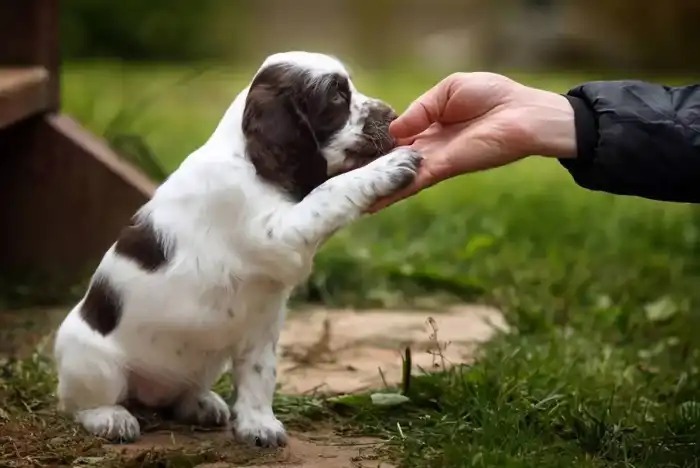Training your dog can be one of the most rewarding experiences as a pet owner. Not only does it enhance your bond with your furry friend, but it also helps them develop good behavior. This article outlines ten effective training tips that will make your dog more obedient and well-mannered.

1. Start with Basic Commands
Why Basic Commands Are Important
Before diving into more complex training, it’s essential to start with basic commands such as “sit,” “stay,” “come,” and “down.” These commands form the foundation for all other training and are crucial for ensuring your dog’s safety.
How to Teach Basic Commands
- Use Clear Verbal Cues: Consistency is key. Always use the same words for each command.
- Reward Immediately: Use treats, praise, or toys to reward your dog immediately after they perform the command correctly.
2. Use Positive Reinforcement
The Power of Positive Reinforcement
Positive reinforcement is one of the most effective training techniques. It encourages good behavior by rewarding your dog when they do something right, making them more likely to repeat that behavior.
Implementing Positive Reinforcement
- Treats and Praise: Use small, tasty treats and enthusiastic praise to reinforce desired behavior.
- Clicker Training: A clicker can be an effective tool to mark the exact moment your dog performs the desired action.
3. Be Consistent with Training
The Importance of Consistency
Dogs thrive on routine and consistency. If you’re inconsistent with commands, your dog may become confused and less likely to follow instructions.
Tips for Consistency
- Establish a Training Schedule: Set aside specific times each day for training sessions.
- Use the Same Commands: Ensure all family members use the same commands and gestures for training.
4. Keep Training Sessions Short and Fun
Why Short Sessions Matter
Dogs have relatively short attention spans, so keeping training sessions brief and engaging is crucial. Aim for 5-10 minute sessions to maintain your dog’s interest.
Making Training Fun
- Incorporate Games: Use fun games like fetch or hide and seek to reinforce commands.
- Vary Your Rewards: Keep your dog motivated by mixing up treats, toys, and praise.
5. Socialize Your Dog
The Benefits of Socialization
Socializing your dog helps them become more comfortable in various environments and with different people and animals. This can significantly reduce anxiety and aggressive behavior.
How to Socialize Your Dog
- Expose Them Gradually: Introduce your dog to new situations, people, and pets gradually to avoid overwhelming them.
- Attend Training Classes: Consider enrolling in puppy classes or obedience classes where your dog can meet others.
6. Address Behavioral Issues Promptly
Why Timely Intervention is Crucial
Addressing behavioral issues as soon as they arise is essential to prevent them from becoming ingrained habits. Ignoring bad behavior can lead to more significant problems down the line.
Strategies for Addressing Issues
- Redirect Negative Behavior: Instead of punishing, redirect your dog’s attention to a more appropriate behavior.
- Seek Professional Help: If issues persist, consider consulting a professional dog trainer or behaviorist.
7. Use Hand Signals Alongside Verbal Commands
Enhancing Communication with Hand Signals
Using hand signals along with verbal commands can improve communication and make it easier for your dog to understand what you want.
How to Incorporate Hand Signals
- Consistent Gestures: Pair each command with a specific hand gesture, ensuring you use the same signal every time.
- Practice Regularly: Reinforce the use of hand signals in training sessions to enhance your dog’s responsiveness.
8. Be Patient and Understanding
The Role of Patience in Training
Training a dog requires patience and understanding. Every dog learns at their own pace, and it’s crucial to be supportive during their learning process.
Tips for Practicing Patience
- Avoid Frustration: If your dog isn’t grasping a command, take a step back and try a different approach.
- Celebrate Small Successes: Acknowledge and celebrate small milestones in your dog’s training journey.
9. Use Real-Life Scenarios for Training
Practical Training Applications
Training your dog in real-life situations can help reinforce commands and ensure they understand how to behave in various environments.
How to Train in Real-Life Scenarios
- Practice Commands on Walks: Use commands like “sit” or “stay” while walking your dog in the park or around the neighborhood.
- Incorporate Daily Activities: Use mealtime or playtime to practice commands and reinforce good behavior.
10. Continue Training Throughout Their Life
Lifelong Learning for Dogs
Training shouldn’t end once your dog learns basic commands. Continuing to train and challenge your dog can keep them mentally stimulated and well-behaved.
Ways to Continue Training
- Introduce Advanced Commands: As your dog masters basic commands, start introducing more complex ones.
- Engage in New Activities: Explore new activities like agility training, tricks, or even canine sports to keep your dog engaged.
Conclusion: Building a Strong Bond Through Training
Training your dog is an ongoing journey that strengthens your bond and enhances their behavior. By incorporating these ten tips, you’ll create a more obedient and well-adjusted companion. Remember that patience, consistency, and positive reinforcement are key components of successful dog training.

Comments (0)